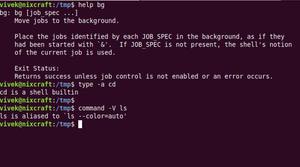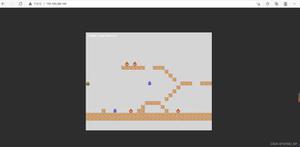Java加载property文件配置过程解析
这篇文章主要介绍了java加载property文件配置过程解析,文中通过示例代码介绍的非常详细,对大家的学习或者工作具有一定的参考学习价值,需要的朋友可以参考下
1 properties简介:
properties是一种文本文件,内容格式为:
key = value #单行注释
适合作为简单配置文件使用,通常作为参数配置、国际化资源文件使用。
对于复杂的配置,就需要使用XML、YML、JSON等了
2 java加载Properties:
java加载properties主要通过2个util包下的工具类: Properties类、 ResourceBundle类
2.1 通过Properties类加载:
Properties类通过load()方法加载配置信息,这个方法接收一个输入流参数:InputStream、Reader。
Properties提供get(String key) 方法读取指定的配置项。
2.1.1 通过ClassLoader获取InputStream加载:
该方式只能读取类路径下的配置文件
(1)先创建Properties对象
(2)获取property文件对应的输入流in
(3)使用Properties加载输入流in
(4)通过Properties.get(key)方法获取配置,如果配置信息不存在,则返回null
/**
* 基于ClassLoader读取properties;
* 该方式只能读取类路径下的配置文件,有局限但是如果配置文件在类路径下比较方便。
*/
public static void method1() {
System.out.println("使用ClassLoader方式加载properties");
Properties properties = new Properties();
/*
* 使用ClassLoader加载properties配置文件生成对应的输入流。
* 使用此种方式,要求property文件必须要放在src目录下,编译之后会被放到class文件相同目录下。
* 因为ClassLoad的基础路径是相对于编译后class文件所在目录(可能是bin,classes),如果将properties放在项目根目录下,使用此种方式可能会找不到 properties文件
*/
//必须要以 /开始 , 是在classes文件根目录下寻找
InputStream in = PropertiesDemo.class.getResourceAsStream("/properties/a.properties");
System.out.println(PropertiesDemo.class.getClassLoader().getResource(".").getPath());
try {
properties.load(in);
} catch (IOException e) {
// TODO Auto-generated catch block
e.printStackTrace();
}finally {
closeResource(in);
}
System.out.println(properties.get("name"));
System.out.println(properties.get("age"));
}
2.1.2 通过构建Reader加载:
该方式的优点在于可以读取任意路径下的配置文件
(1)创建Properties对象
(2)创建一个Reader,可以指定路径,不局限于类路径
(3)使用Properties加载Reader
(4)Properties.get(key)方法读取配置
/**
* 使用inputStream读取配置文件
* 该方式的优点在于可以读取任意路径下的配置文件
*/
public static void method2() {
System.out.println("使用InputStream方式加载properties");
Properties properties = new Properties();
BufferedReader reader = null;
try {
/*
* System.getProperty("user.dir"): 获取项目根路径, 而后附加配置文件的路径
*/
reader = new BufferedReader(new FileReader(System.getProperty("user.dir") + "/properties/a.properties"));
properties.load(reader);
System.out.println(properties.get("name"));
System.out.println(properties.get("age"));
} catch (FileNotFoundException e) {
// TODO Auto-generated catch block
e.printStackTrace();
} catch (IOException e) {
// TODO Auto-generated catch block
e.printStackTrace();
}finally {
closeResource(reader);
}
}
2.2 通过ResourceBundle类加载:
ResourceBundle读取配置有2种方式:
(1)指定文件路径 :相对于src、classes的相对路径
(2)提供InputStream
ResourceBundle提供方法getString(key) 和 getObject(key)读取配置项
使用路径加载,不需要指定文件后缀名,且不需要手动关闭相关资源,比Properties类操作要简单。
/**
* 通过ResourceBundle 读取配置, 此种方式项目Properties要简单
* ResourceBundle读取配置有2种方式: (1)指定文件路径 (2)提供InputStream
*/
public static void method3() {
System.out.println("使用ResourceBundle方式加载properties");
/*
* (1)直接指定文件路径:
* 可以使用相对路径,从类路径开始,且不需要指定properties文件的后缀
*/
ResourceBundle resource = ResourceBundle.getBundle("properties/b");
System.out.println(resource.getString("name"));
System.out.println(resource.getString("age"));
try {
/*
* (2)通过InputStream加载配置:
* 通过当前类的class实例,获取资源输入流
*/
resource = new PropertyResourceBundle(PropertiesDemo.class.getResourceAsStream("/properties/a.properties"));
System.out.println(resource.getString("name"));
System.out.println(resource.getString("age"));
} catch (IOException e) {
// TODO Auto-generated catch block
e.printStackTrace();
}
}
以上是 Java加载property文件配置过程解析 的全部内容, 来源链接: utcz.com/z/318106.html




